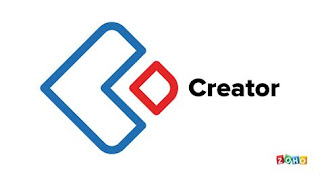The News
On March 3, 2022 Zoho released the new version of its Creator no-code/low-code platform. It offers a unified development platform to empower both IT teams and business users.
The new release is targeted at building end-to-end solutions in an easy way. It combines integration, process automation and analytics/business intelligence with the ability to build applications and offers application management capabilities needed to manage security, compliance and governance.
Along with the built-in collaboration features it allows for a tight collaboration between business- and IT users.
The bigger picture
About a year ago I wrote a first article on no-code and low-code platforms, based upon the realization that the ongoing digitalization and necessity for business agility in fast changing environments require more than traditional developer support. At that time I cautioned that business users should not just be allowed to do everything without governance in order to avoid another “Lotus Notes moment”.
Since then the world moved on.
No-code and low-code have become an indispensable part of the business applications world. They are critical to the fast adaptation of business applications and process automation across business applications. This is a task that is traditionally handled by IT departments. These, however, are regularly understaffed to be able to fulfil all the operations and enhancements demands that are on their desks.
To achieve this, no code and low code platforms need to support both, IT departments as well as the business departments. This means that they need to straddle a considerable gap.
Typically, no-code and low-code platforms concentrated on either business users or IT departments. The latter are not really useful for IT departments as they are too simplified, the former cannot be used in the business departments as necessary IT skills are lacking. This leaves a considerable space in between.
The way forward is to make things as viable as possible for both parties by enabling
- Fast and efficient development and integration done by IT departments
- Business users to easily find enhancements/processes/apps that solve their challenges
- Business users to implement own, consistent applications on their own if missingapps/functionalities are encountered
- A collaboration framework that ensures good cooperation between IT and business departments
- A governance framework that makes sure that developed applications maintain and support the consistency and integrity of data as well as necessary data privacy
On top of this, no-code/low-code platforms need to strongly support the interoperability of different application stacks. Nearly no company builds around one single vendor or application stack.
The trajectory is quite clear. Development becomes more and more what we used to name declaratory. Low-code is the consequence of no-code not yet being strong enough to avoid coding altogether. The ongoing adaptation of business applications to changing needs will require less and less low-code and move more and more into the no-code direction.
My Analysis and PoV
Zoho Creator is aiming squarely at the gap that no-code/low-code platforms need to straddle. It, on one hand makes it very easy to create applications, extensions, and integrations for business users and on the other hand allows for the implementation of complex business applications, which is normally done by IT departments. Bridging this gap is quite hard to achieve and Zoho has done a pretty good job at it.
Although tightly integrated into the Zoho software stack, the platform is also independent of this stack, which means that it does not need to run Zoho applications to use Zoho Creator. It offers around 600 prebuilt integrations. In fact, a considerable number of Creator customers does not (yet?) run Zoho applications.
Creator addresses the points I mentioned above and enables IT departments and business users to build apps, integrate processes and create relevant analyses that help driving decision making based upon data.
All this is the result of more than 15 years of evolution of Creator.
Is it already perfect? Like any other solution, not yet. Is it a solution that businesses should have a very close look at when it comes to selecting a no-code/low-code platform? Clearly yes. If you want to learn more, refer to my complimentary report on the Zoho Creator platform.
I for my part am really keen to see the next steps that this platform takes to integrate different teams even more and to integrate the available tools even better.

The overall process of end-to-end phases of the development cycle, testing and deployment is made easy with Zoho Creator’s lifecycle management features. You can publish the changes in the applications as versions with no data corruptions, validate and schedule publishing, view errors, trace bugs, test permissions and notify the changes to the stakeholders.
ReplyDeleteIndeed, the new version addresses the need for an easy-to-use platform that enables business users (or citizen developers) to create business applications, while empowering the IT teams to place sufficient guardrails and govern usage, ensuring security and compliance.
If you need any help with Zoho creator, feel free to reach out to us.
https://www.bizappln.com/zoho-creator.html
Thanks.